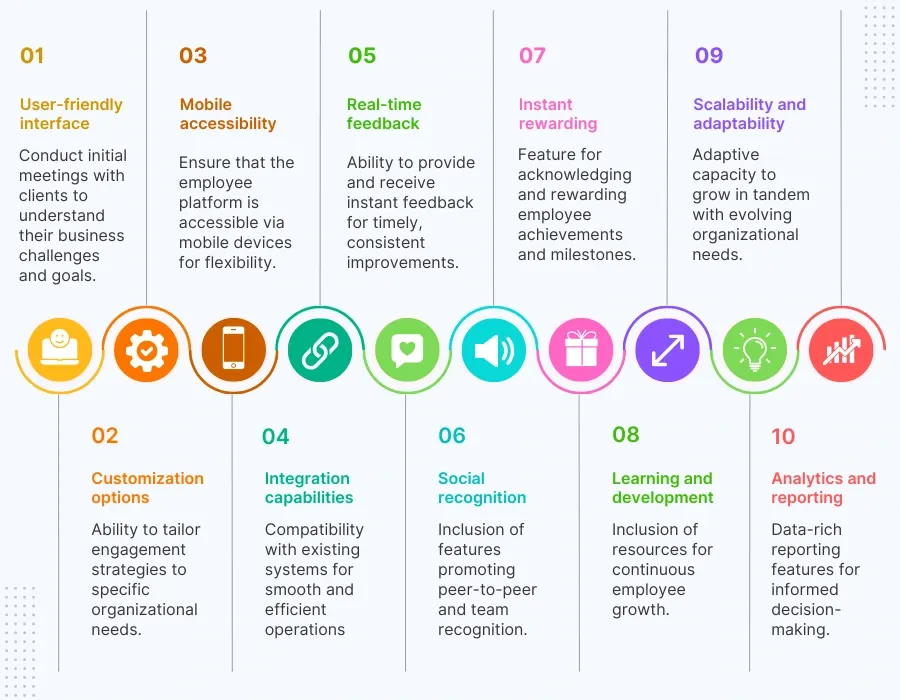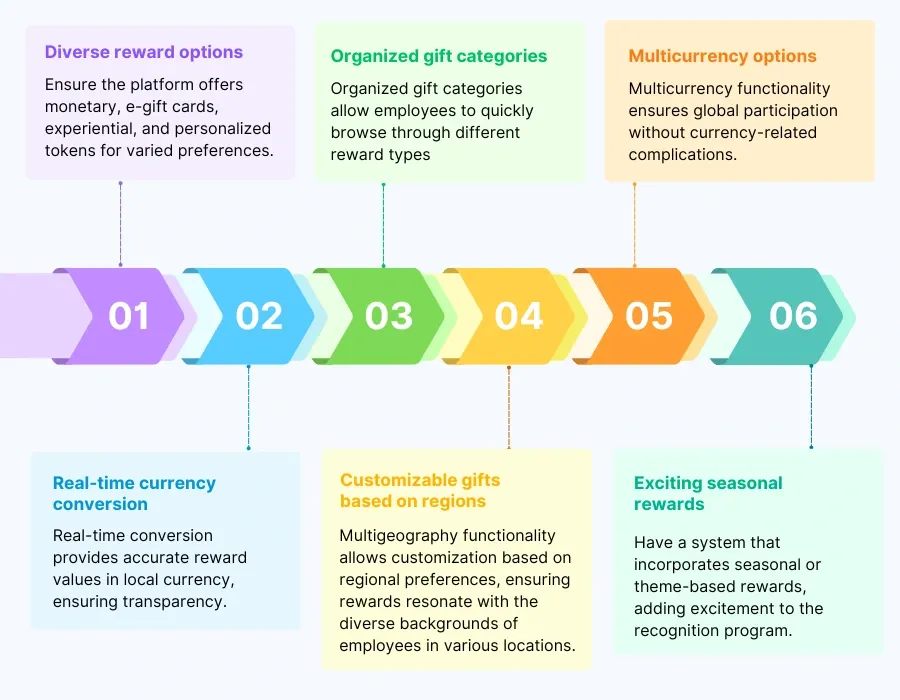Table of Contents
“The only thing worse than being blind is having sight but no vision.” — Helen Keller
As we step into a new year, this quote resonates deeply with the HR practices implemented at any workplace. Today, HRs are more like a tech-savvy trendsetter, always ready for the next big thing. They will have to continue to adapt to technological advancements, societal shifts, and changing employee expectations.
The reason is clear: The shift is big. It's no longer only about managing people but to drive how we all work.
At the forefront of this transformation, a few key HR trends are poised to redefine the way organizations approach people management.
Let’s understand how.
3 HR trends that will redefine workplace practices
These HR trends highlight a significant shift towards a more holistic, employee-centered approach. When adopted, companies can not only enhance their workforce's productivity and well-being but also ensure sustained business success.
1. Holistic employee engagement platforms will take center stage
This proves that things are no longer about the occasional team lunch or the yearly performance review. Companies are realizing the need for a more comprehensive approach to keep their employees motivated, productive, and, most importantly, happy. Employee engagement is not just a buzzword; it's a key driver of business success.
Why there is a shift towards holistic employee engagement platforms:
- Diverse workforce needs: The traditional top-down approach to management is giving way to more inclusive and collaborative work cultures. Holistic platforms support this shift by facilitating open communication and employee involvement in decision-making.
- Technological advancements: The rise of digital tools and platforms allows for more innovative and effective ways to engage employees, from virtual team-building activities to AI-driven personalized feedback systems. With the rise of digital tools, using a cloud-based HR system has become a smart move as the system makes it easier for everyone to stay connected and share ideas. It helps organize team activities and give feedback tailored to each person. Moreover, cloud-based HR systems provide scalability and flexibility that traditional systems can't match. As organizations grow, their needs change, and a cloud-based system can adapt quickly to these changes without the need for significant infrastructure investments. This adaptability is particularly beneficial in rapidly evolving industries or in times of organizational change, such as mergers or expansions.
- Rising importance of well-being: There's a growing focus on mental health and overall well-being in the workplace, which holistic platforms effectively address.
- Changing employee expectations: Today's employees seek meaningful work and personal growth opportunities, going beyond just financial compensation.
- Business performance link: There's a clearer understanding of the direct impact of employee engagement on business performance, including productivity, innovation, and customer satisfaction.
Factors to look for when choosing a holistic employee engagement platform

Salesforce, a global leader in CRM solutions, places a high priority on cultivating a healthy workforce. The company has implemented a unique wellness reimbursement initiative, providing employees with a monthly allowance of $100.
This allowance can be utilized for various activities such as attending concerts, participating in gym classes, or seeking nutritional therapy.
The positive impact of these wellness programs on the overall welfare of employees has been significant, showcasing Salesforce's dedication to fostering a thriving and supportive work environment.
The impact of implementing holistic employee engagement platforms
2. Digital rewards and recognition features will be in high demand
As the shape of work evolves, so does the approach to employee rewards. Digital badges and rewards have taken center stage, offering a convenient yet impactful way to recognize achievements.
Why digital rewards and recognition are trending
- Instant gratification: Digital rewards can be distributed instantly, providing immediate recognition and gratification, which can boost morale and motivation.
- Convenience and accessibility: Digital rewards are easily accessible to a diverse and often geographically dispersed workforce. Whether an employee is working remotely or in the office, digital recognition ensures everyone can be appreciated without logistical challenges.
- Gamification elements: Incorporating gamification elements into digital rewards adds an element of fun and engagement. By turning recognition into a game, employees are motivated to achieve more and contribute positively to the work environment.
- Global connectivity: In today's globalized workforce, digital rewards transcend borders. They allow companies to celebrate achievements on a global scale, fostering a sense of unity and shared success among employees across different regions.
- Environmental concerns: Digital rewards are more environmentally friendly compared to physical rewards, which aligns with the growing emphasis on sustainability in business practices too.
Factors to look for in people engagement platforms with digital rewards and recognition feature:

Rakuten firmly believes in keeping everyone involved. They foster a sense of connection within the company culture by offering corporate sports club memberships and gym access.
Plus, they chip in with financial perks like helping out with relocation. It's their way of making work a place where everyone's happy and connected.
The impact of implementing digital rewards and recognition
3. The generative AI experience will transform employee experience
Generative AI, contrary to dystopian fears, has revolutionized HR tech platforms. It's not about replacing humans but enhancing the employee experience. AI helps in personalizing the employee journey, from onboarding to training, and even in performance management.
Why AI in HR is trending
- Predictive insights: Generative AI analyzes patterns to predict future needs, ensuring proactive responses to employee requirements.
- Tailored learning paths: Say goodbye to one-size-fits-all training. AI crafts personalized learning experiences, addressing individual skill gaps and promoting continuous growth.
- Efficient task automation: No more drowning in repetitive tasks. AI takes care of the mundane, giving employees the freedom to focus on tasks that truly matter.
- Enhanced decision-making: Data-driven insights from AI empower HR professionals to make informed decisions, fostering a culture of continuous improvement.
- Boosts employee satisfaction: When work feels tailored, when tasks are streamlined, and when growth is personalized, employee satisfaction skyrockets.
Factors to look for when choosing a platform with generative AI

IBM has implemented AI in their HR systems
One shining example of a company at the forefront of implementing AI in their HR systems is IBM. IBM has seamlessly integrated AI into various aspects of their HR processes, from recruitment to employee engagement.
Through their AI-powered tools, IBM has enhanced the efficiency of their hiring processes, ensuring a more precise match between candidates and job roles. Moreover, their AI-driven HR systems provide personalized learning experiences for employees, contributing to continuous skill development and career growth.
IBM's adoption of AI in HR exemplifies how technology can be harnessed to create a more streamlined, personalized, and forward-thinking workplace experience.
The impact of implementing generative AI in HR systems
Conclusion
As we peer into the crystal ball of HR's future, one thing is clear – change is the only constant. The future of HR is not a distant reality; it's an unfolding narrative where innovation meets compassion, and where the human element is not just preserved but elevated.
The HR trends this year highlight a significant shift towards a more holistic, employee-centered approach. When you embrace these trends, you can enhance your workforce's productivity and well-being while ensuring sustained business success in a rapidly-changing world.


